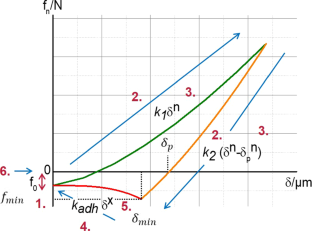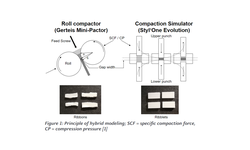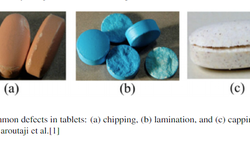Scientific papers
The objective of this study is to evaluate the level of particle rearrangement and the extent of anisotropy during uni-axial compaction of microcrystalline cellulose (MCC) using Discrete Element method simulations. The elasto-plastic cohesive hysteretic Edinburgh contact model is employed in this investigation. Initially, a calibration strategy is outlined to determine all necessary collisional, frictional, and cohesion input parameters. A dual approach is adopted, combining direct determination tests (such as nano-indentation or inverse gas chromatography) and indirect fitting tests (like the tumbling drum test), resulting in the final set of property values. Subsequently, uni-axial compaction simulations are performed for MCC across various target compaction pressures and different primary particle dispersities (mono- and polydisperse). The anisotropic behavior of compaction is analyzed by computing averaged quantities, including the deviatoric term and the maximum difference between characteristic roots of the fabric tensor. The findings reveal a residual degree of anisotropy post-compaction, dependent on the maximum compaction pressure and particle dispersity, which does not fully recover after powder decompression.

Comments
No comments posted yet.
Add a comment















